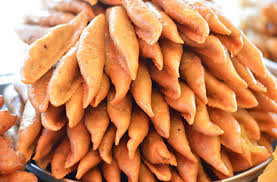During the holy month of Ramadan, as has been the case for years, the city of Ghomrassen in Tataouine Governorate witnesses a large influx of visitors from the southeastern governorates and regions seeking to purchase various Ramadan sweets. This city experiences a vibrant commercial activity throughout the holy month, with an atmosphere filled with joy among residents and visitors.
Hours before sunset, the city of Ghomrassen transforms into a vibrant commercial destination, as fasting people from various governorates and neighboring regions flock there to purchase a variety of Ramadan sweets. This scene embodies the deep-rooted traditions of this ancient city, known throughout history for the quality of its traditional confectionery.
Most of the region’s artisans work in the capital, Tunis, year-round. With the arrival of the month of fasting, many of them head back to their hometown of Tataouine to reconnect with their ancestors, bringing with them their passion for the traditional confectionery for which their region is famous.
Returning home during Ramadan is not just a business commitment; it’s an annual ritual that awakens the warmth of family and brings back memories. One of these craftsmen says, “Nothing compares to spending Ramadan with family, where the authentic atmosphere and aromas fill the air and bring back childhood stories and beautiful pasts.”
From morning, the markets bustle with activity, with shops specializing in traditional sweets such as “makhrak,” “zalabia,” and “maqroud” lining the streets. Their fragrant aromas fill the air and their bright golden colors captivate the eye. As iftar approaches, demand for these sweets increases, as visitors eagerly purchase items to add an authentic Ramadan touch to their tables.
This dynamic extends to the unique social atmosphere as well as commercial activity, as families and friends meet in the alleys and markets to exchange Ramadan greetings and share moments of intimacy and friendship.
Every evening, crowds of shoppers from neighboring governorates and cities, such as Medenine, Zarzis, Beni Khedache, and others, flock to Ghomrassen. This is a daily tradition, and the market is crowded with men, women, and children, wandering among the vendors, buying up the famous Ramadan sweets. This atmosphere is brimming with vitality and activity. The voices of vendors rise, promoting their wares and exchanging jokes with customers. The alleys bustle with restless activity, a scene that embodies the attachment of the people of southern Tunisia to their authentic customs.
Salma Najeh, a craftswoman who has specialized in making traditional sweets for many years, confirms that the month of Ramadan represents an exceptional season of the year, as demand doubles and the city transforms into a commercial destination, attracting visitors from Tataouine, Medenine, Gabes, and even from other regions somewhat farther afield.
Salma smiles, “This season is like a wedding for the city, as we welcome our loyal customers who return every year. The sweets we make according to traditional methods still retain their authentic taste, which everyone loves.”
The Ramadan atmosphere in Ghomrassen is not limited to the markets; it is evident in every corner of the city, where the aromas that distinguish Ramadan from other months emanate. As the time for breaking the fast approaches, visitors return home carrying bags full of delicious sweets and foods, while the city remains alive, awaiting a new day of activity and joy. This renewed cycle confirms that Ramadan in Ghomrassen is not just a month of fasting, but an annual rendezvous with ancient traditions, family gatherings, and joy that fills the air.







